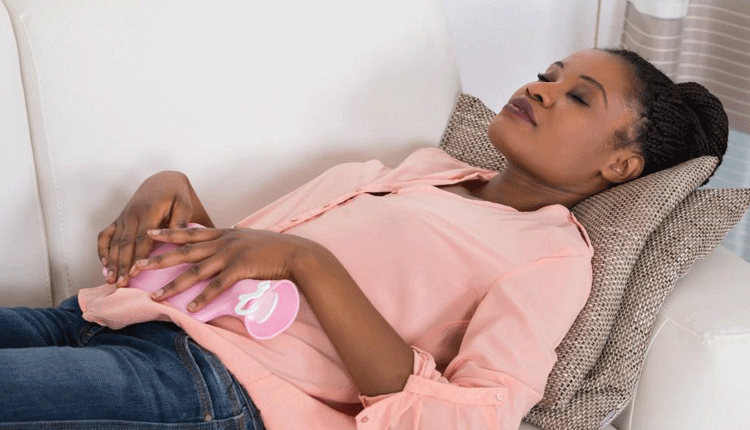Our long, painful experience with fibroids

Wanjiku Karugo has always had heavy, painful and prolonged periods, which she always considered normal.
However, she realised something was wrong in May when he period lasted for almost a month.
Since she did not have money to go to hospital as she had used most of it to care for her mother who died last year from cancer, she opted for over the counter medication hoping her menses would stop.
She even tried miti shamba and other alternative medicine to see if they would help stop the bleeding and the pain. The menses stopped, but the pain persisted.
“I would have debilitating lower back pain and cramps yet I was no longer on my periods. I persevered for a few months untill August when my friends advised me to visit a gynaecologist.
We did several tests including an Magnetic Resonance Imaging (MRI), which showed I had fibroids, some of which were pressing on my organs and causing me the chronic pain,” she says.
The biggest is 11cm, which means they had been growing for some time. The doctor advised Wanjiku to get a laparoscopic myomectomy, a process in which fibroids are removed through several small incisions, as soon as possible to deal with the pain.
“I am still fundraising for the surgery as it is expensive and I have no money,” Wanjiku shares. She is fundraising through Paybill 891300 and account number 49462.
Asymptomatic cases
Wanjiku is one of numerous women who suffer from fibroids. One in three women has uterine fibroids, with the risk increasing in tandem with increase in age.
Research shows black women are two to three times more likely to get fibroids than their white counterparts though the findings cannot be explained.
While there are no statistics to accurately gauge how many women suffer from fibroids, medical practitioners argue for more educational drives around menstrual health to promote testing in case of painful or heavy bleeding, as many African women view this as normal while it is not.
Uterine fibroids, also called myomas, are non-cancerous tumours arising from the smooth muscle cells of themuscular layer of the uterus explains Dr Wainaina Mungai, a consultant obstetrician and gynaecologist at City Health Hospital. They arise in reproductive age females. They can either be symptomatic or asymptomatic.
“When symptomatic, fibroids present with symptoms of abnormal uterine bleeding such as heavy periods, painful periods, bleeding between periods, prolonged periods, anaemia, abdominal pain, lower back pain, sense of fullness and urgency to pee frequently, pelvic pain or pressure, miscarriages and infertility, and pain during intercourse.
Symptoms are largely based on size of the fibroids and their location.
Fibroids are described according to their location in the uterus and are of four main types, subserosal, intramural, submucosal and cervical fibroids,” Dr Mungai explains.
Subserosal fibroids are the most common, and push outside of the uterus into the pelvis.
They can grow large and sometimes have a stalk that attaches to the uterus forming what is called a pedunculated fibroid.
Intramural fibroids develop in the muscular wall of the uterus, submucosal fibroids in the open space inside the uterus while cervical fibroids are located at the cervix.
Patients with submucosal fibroids typically present with heavy or prolonged menses while subserosal fibroids are associated with lower back pain and abdominal pain for instance, as evidenced in Wanjiku’s case.
There are several risk factors for uterine fibroids. Parity’s is the most common, which means the longer you stay without conceiving, the higher the risk of development of fibroids.
Studies show genetics play a role in some cases with some genes more susceptible to fibroids than others.
Other risk factors are alcohol consumption, smoking, obesity, diet such as significant consumption of beef and other red meats, early exposure to oral hormonal contraceptives and not carrying a pregnancy even as age progresses.
Dr Mungai says having one or more pregnancies extending beyond 20 weeks decreases chance of fibroid formation with additional pregnancies further reducing the risk.
While combined oral contraceptives have been associated with increased risk of fibroids, long acting progestin only contraceptives such as Depo-Provera appear to protect against development of fibroids.
While the risk factors tend to explain the incidence in some people, some cases cannot be attributed to any of the risk factors and are simply unexplainable. Jacinta Mumbua is one of these people.
“No one in my family has fibroids. I do not smoke or take alcohol. My fibroids are asymptomatic.
I only got to learn about them when I got pregnant. I had never had painful or heavy periods.
When I was six weeks pregnant, sharp abdominal pains prompted me to go to hospital,” she says.
The scans showed Jacinta had multiple fibroids ranging between 10cm and 12cm. It was a painful pregnancy, and she could only be given mild painkillers.
“I was constantly in and out of hospital doing numerous scans to check on the baby.
By the grace of God, I delivered a healthy baby boy who is now one. It had to be a caesarean delivery as some of the fibroids were blocking the cervix.
And yes, I still have the fibroids as the doctor told me that they cannot be removed during childbirth even when delivering via caesarean section,” Jacinta explains.
Treatment options
Dr Mungai says fibroids cannot be removed during a caesarean section delivery as there is a high risk of the mother bleeding out.
The mother is supposed to heal first then the fibroids can be removed later.
This can be done via a laparoscopic or open abdominal operation or through fibroid embolisation, a minimally invasive option that shrinks the size of the growth.
Symptoms can be managed in various ways with patients with heavy menstrual bleeding put on progestin intrauterine device or combined oral contraceptives and/or tranexamic acid, medication used to treat or prevent excessive blood loss from major trauma including surgery.
In some cases, doctors can prescribe gonadotrophin-releasing hormone, which are extremely efficient in reducing uterine fibroid volume and reversing related symptoms.
However, fibroids tend to return to their pre-treatment size about six months after discontinuing treatment.
In cases where anaemia is one of the symptoms, iron supplements are given.
A hysterectomy can be performed where the uterus is wholly removed. This is normally the last resort and is only performed on people who do not want future fertility or who have attained menopause but are still plagued by fibroids.
“When performing a hysterectomy, we usually leave the ovaries intact therefore there is no need for hormonal replacement.
Without the uterus, other symptoms such as hot flashes, mood changes, vaginal dryness due to low oestrogen levels can be used as a guide to know if a woman has achieved menopause,” Dr Mungai further explains.
He emphasises the importance of post-treatment care warning against lifting heavy items, strenuous activity, and sex for the first six weeks. One should only try to conceive six months after a myomectomy.
He advises patients to ambulate to reduce risk of deep vein thrombosis. Keeping off alcohol and smoking while maintaining an active lifestyle fuelled by a healthy balanced diet that is free from saturated fats is also important in reducing the recurrence of fibroids during and post treatment.
For Wanjiku and Jacinta, their only advise is for fibroid warriors to find others who have suffered from fibroids for moral support.
They share that shared stories have a way of making the journey seem lighter and less arduous.










